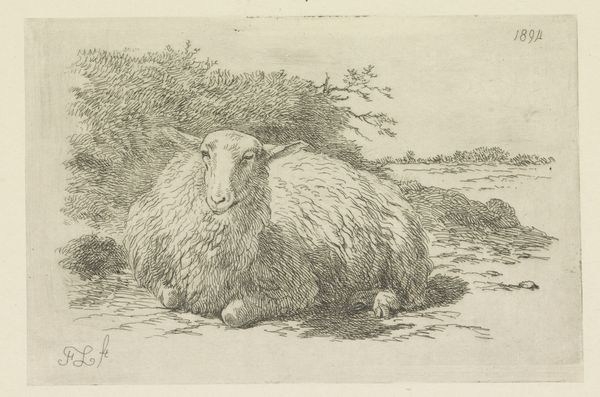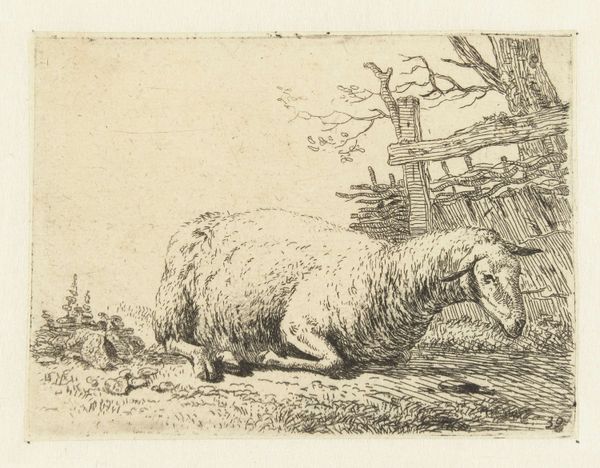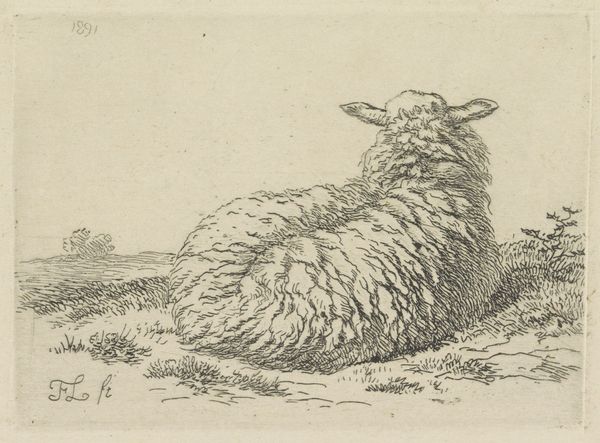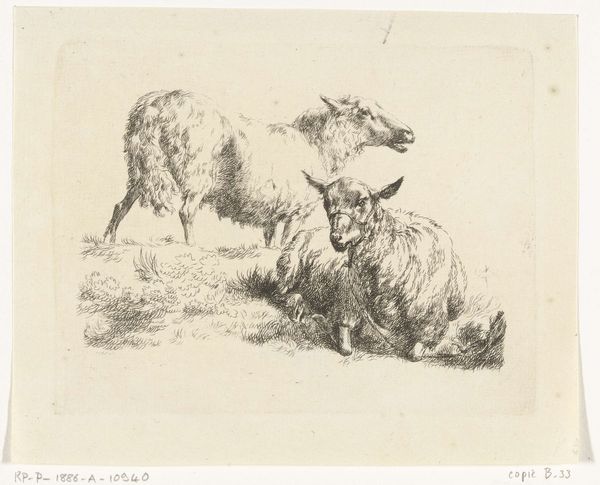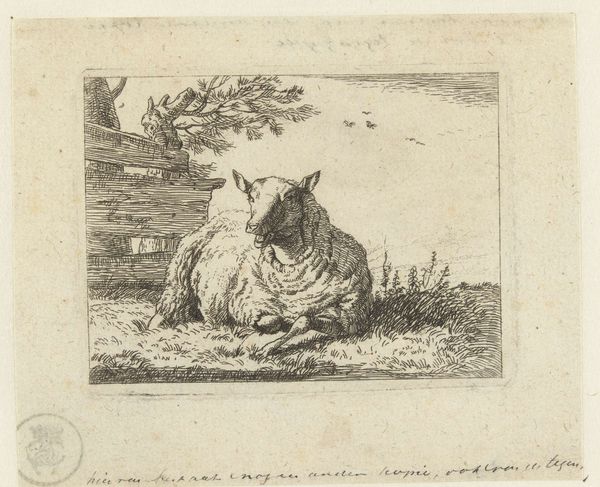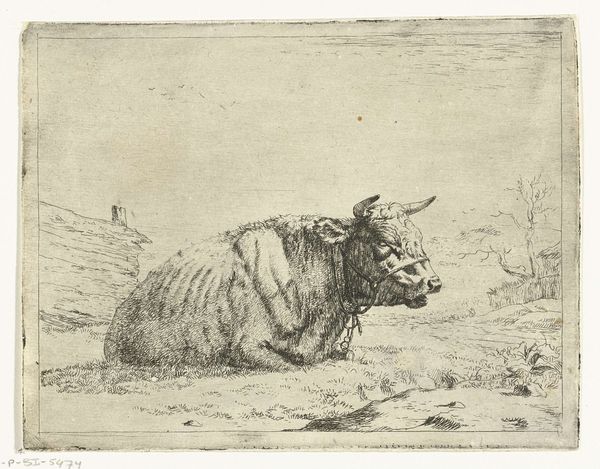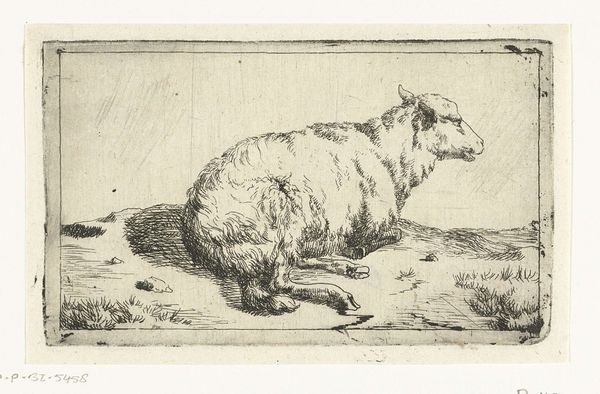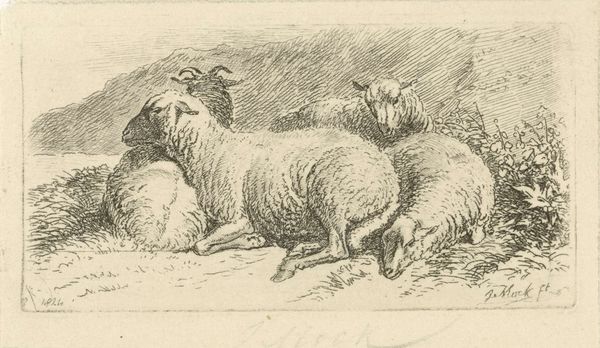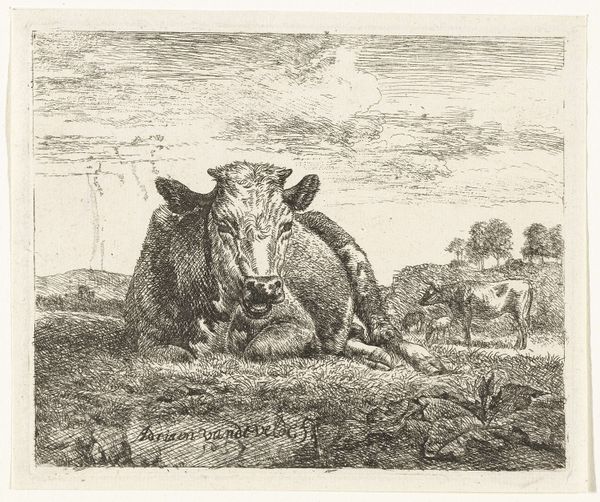
print, etching
#
dutch-golden-age
# print
#
etching
#
landscape
#
line
#
genre-painting
#
realism
Dimensions: height 73 mm, width 97 mm
Copyright: Rijks Museum: Open Domain
Karel du Jardin made this etching of a sheep near a fence using metal, acid, and ink. The image is small, intimate, and rendered with economical lines. Du Jardin likely covered a copper plate with a waxy, acid-resistant ground, then drew the composition with a needle to expose the metal. Immersing the plate in acid would etch the lines, which were then filled with ink and printed onto paper. The sheep and fence emerge from the skilled manipulation of line, creating a sense of depth and texture. The printmaking process was crucial for disseminating images in the 17th century, fueling a growing art market, and offering artists a way to reach a wider audience. It represents a shift towards a more commercial art world, where images could be reproduced and sold, making art more accessible to different social classes, even if the subject matter still favored pastoral scenes of rural life. It reminds us that even seemingly simple images have a complex relationship to labor, production, and consumption.
Comments
No comments
Be the first to comment and join the conversation on the ultimate creative platform.
